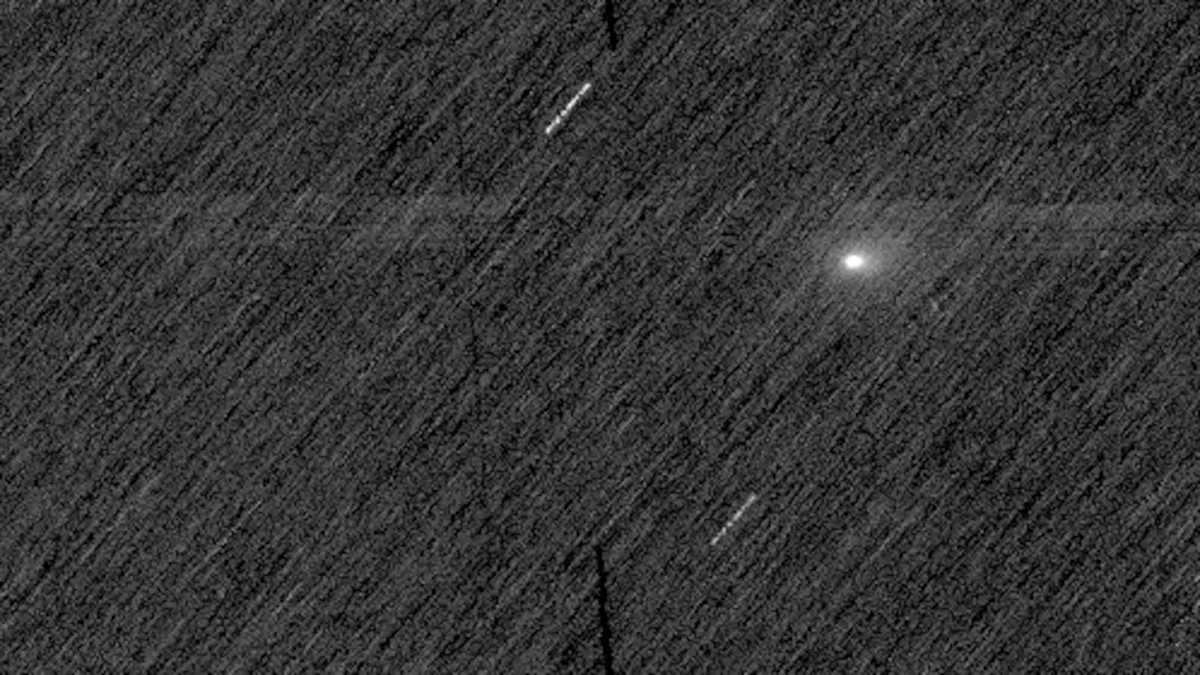
Astronomers have recently achieved a remarkable feat by capturing a rare glimpse of an interstellar comet as it zoomed past Mars. The comet, designated 3I/ATLAS, was imaged by two orbiters from the European Space Agency (ESA)—the ExoMars and Mars Express—on October 3. This significant observation was made possible as the comet approached the Red Planet, located fewer than 200 miles from the orbiters.
Given the considerable distance and the comet's relatively dim luminosity, scientists were uncertain about the potential outcomes of this observation. According to ESA, the CaSSIS camera faced significant challenges while capturing images of 3I/ATLAS, which is estimated to be about 10,000 to 100,000 times fainter than the typical targets these cameras usually photograph. Nick Thomas, the principal investigator of the CaSSIS camera, highlighted the difficulties in observing such a faint object.
At the time of imaging, the comet was approximately 18.6 million miles away from the orbiters. The cameras successfully captured the central region of the comet, which consists of an icy-rocky nucleus surrounded by a coma—a fuzzy halo of gas and dust that envelops the nucleus of the comet. This observation marks 3I/ATLAS as one of only three interstellar objects ever recorded as they enter our solar system.
Initially spotted on July 1 by the Asteroid Terrestrial-impact Last Alert System in Río Hurtado, Chile, astronomers believe that 3I/ATLAS could potentially be the oldest comet ever observed, with an estimated age of 3 billion years older than our solar system. Recent announcements have revealed that the comet is much larger than previously anticipated, likely weighing over 33 billion tons. Its nucleus is primarily composed of carbon dioxide gas and water ice.
The heat and radiation emitted by the sun are activating the comet, causing it to release gas and dust that form the surrounding coma. This phenomenon has generated great interest among scientists, who are eager to further analyze the data collected by the ESA's orbiters. In November, ESA astronomers plan to observe 3I/ATLAS with the Jupiter Icy Moons Explorer (Juice) as it approaches the sun at its closest point.
Colin Wilson, the project scientist for Mars Express and ExoMars at the ESA, expressed his enthusiasm, stating, “While our Mars orbiters continue to make impressive contributions to Mars science, it’s always extra exciting to see them responding to unexpected situations like this one.” Scientists are keenly anticipating the insights that will emerge from the ongoing analysis of the comet's data.